‘Short, but deep’: Interview with Japanese filmmaker and curator Yuka Sato by Yap Khai Qing
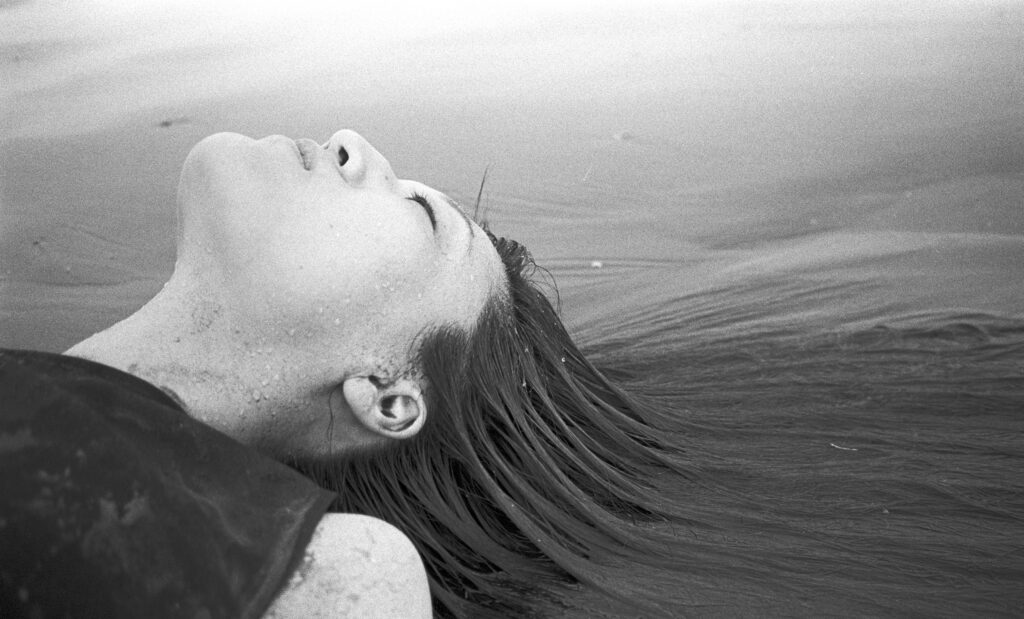
Numb © Yuka Sato 2016
Hi, Yuka!
Hi, Khai.
Yuka, you are first of all an artist. I wonder why you decided to join the Place M Film Festival and become a kind of curator and manager?
As I worked at the photo gallery as a filmmaker, I always wondered: Shouldn’t photographers and filmmakers interact a little more? Isn’t there a need for that?
So I started the film section at Place M, which Masato Seto, the owner, agreed to. The film festival is one of our efforts to explore the crossing of boundaries between photo and film.
Also, another reason for this is that there aren’t many chances for filmmakers to present their films in Japan.
So collaborating with Place M is actually a kind of biographical coincidence …
Yes, it is. But it is not that coincidental in the end, because the reason why I started to work there was that I always wanted to have the opportunity to get to know people who are interested in both photos and films and get inspiration from them.
Get inspiration from the audience?
Yes. Why not? Do you think that’s strange?
Because artists usually do their thing, regardless of what the audience thinks. In contrast to companies.
I’m inspired by the audience as well. The audience’s questions, opinions, and comments give me another perspective on things.
What makes this year’s film festival special, in contrast to the one from last year – besides it being held online?
In 2019, we were able to have discussions each time the program screening was over.
We had lively face-to-face discussions. Filmmakers were inspired by photographers and vice versa, including the audience as well. But this year, we can’t have that …
On the other hand, this time it was possible to reach people outside of the Tokyo area, even those overseas.
Are this year’s participants limited to those who are currently living in Japan?
Other than the artists from Vidéographe, all our participants are based in Japan. This is because we were planning to have it offline until the very last minute. We were also planning to have talk sessions with them at the gallery. Unfortunately the plan changed because of the pandemic. Also, manpower was limited, and could not be expanded. So the artists can only be from Japan.
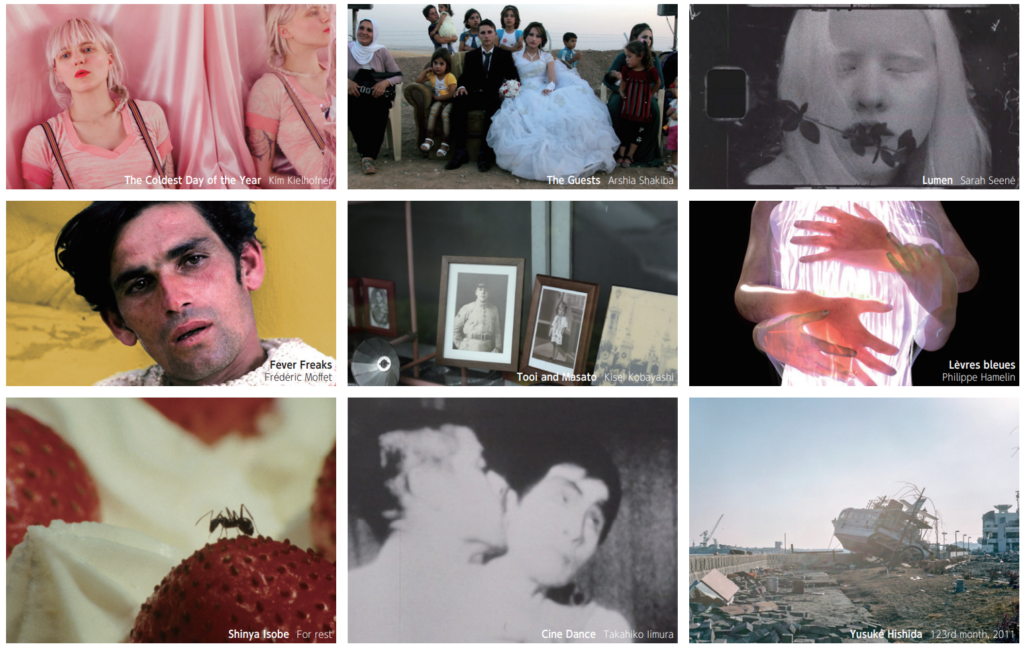
A selection of films shown at this year’s Place M film festival
Why did you choose to collaborate with Vidéographe instead of other Japanese film distributors?
Vidéographe is the distributor I currently belong to as a filmmaker. We, Vidéographe and Place M, have been planning this collaboration for several years.
Which challenges are there in directing such a large event?
I enjoyed most parts but to show films online, as I’ve mentioned above, there is limited interaction. We can hardly see the reaction from the audience as well as from the critics. Also, we still have something we can improve on like the promotion process. This is a new film festival so there are people who may be interested in it but we haven’t reached them yet.
What is your own perspective on the artistic value of combining both photography and video into a film?
To me there is a huge artistic value of combining both photography and video into a film.
I can say this is my own style of making films.
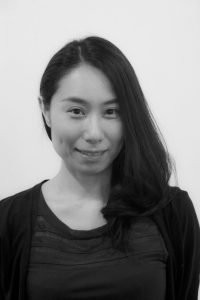
Yuka Sato is a Japanese filmmaker based in Tokyo. Her films have been shown nationally and internationally in Singapore, Edinburgh, Hamburg, Oberhausen etc. In 2019, she started film curatorial projects. Through the direction of film festivals, which had the same theme as her own work creation, she has continued exploring possibilities in both photography and film. In 2021 she held a solo photo exhibition of her work “Birthday”, and she continues to search for the boundary between photography and film. Website: www.yukasatofilm.com. Photo: private
Whenever I’m creating a film, I consider both film and photography. Even if I don’t include actual photographs, there are some elements of photography in each of my films.
In particular, the dark room for development and printing is a very important space for my production. The space has a special atmosphere and time, and it inspires me to have a strong imagination for some reason. Some of my works were certainly produced in the dark room with unexpected chemistry.
I once saw a Martin Scorsese film, where he used stills – not photos, stills. I loved it. But I couldn’t exactly say what it was that fascinated me so much. I think it was the fact that something all of a sudden changed. It was still the film – but I saw that it was a film. I became aware of the medium. And I loved the distance that this awareness created.
That’s very interesting. What you say is really intriguing to me. Distance is created and the artifice becomes apparent. Which movie is it?
“Cape Fear”. Have you seen it?
“Cape Fear”? Yes. I have seen it. I also watched his other films like “Alice Doesn’t Live Here Anymore”, “Taxi Driver”, “Goodfellas” and such … as well as that very famous Michael Jackson music video. Even with the limited number of Scorcese films I’ve seen, I still think his films are really experimental.
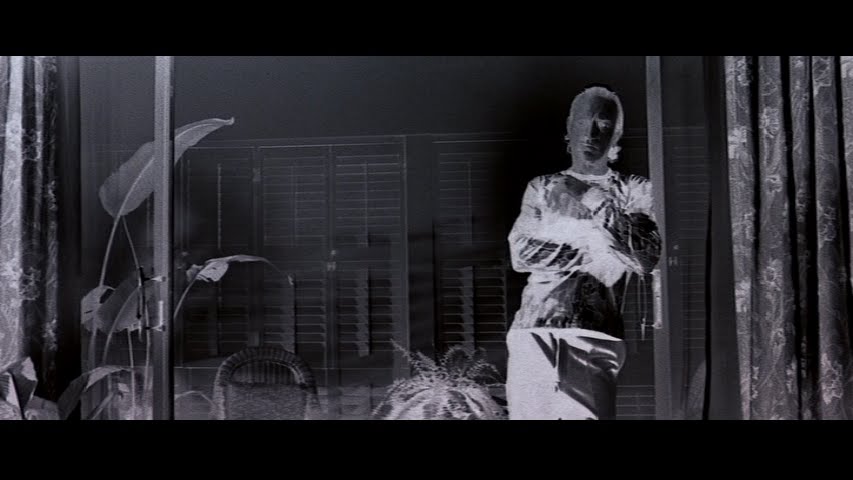
Still from “Cape Fear” by Martin Scorsese (1991)
I think so, too. In “Cape Fear”, he also uses negatives. And it works so well, it doesn’t come across as an effect but as a necessity. It’s part of the storytelling. – Scorsese lately made this interesting comment: “Marvel movies are not Cinema.” I think it is another way of saying: They are not art. Whereas it is very clear that your films are art. – For you, personally, is there a boundary between art and entertainment? And if yes, what does it consist of? If not, that would mean: Marvel movies are art, right?
Before I started creative work as a filmmaker, I had thought that an “Artist” is someone with special skills or talents and “Art” is something that can be done or created by that person.
Whether the thing, I guess, is considered art or just entertainment depends on the critics or audience.
When I saw experimental films for the first time, I was so excited. So, experimental films were entertainment for me at that time.
That’s nice! I guess that is how it’s supposed to be. – What do you see as the boundaries between photo and video?
I guess one of the boundaries is time. When it comes to time, of course it can not only affect the creation process, but also the outcome of the work. Video, or film, are media that expand on the concept of time from photography.
As I mentioned above, I sense some kind of distance between photographers and filmmakers. So, I want to also look into what causes that through my activities, such as the film festivals.
Back to photos and stills, I would like to know a little more about what you just said. So you think the still images from the movie and the photos are totally different, right?
If you ask me, in that Scorsese movie, I’d say: yes, they are different. These stills kind of flickered … They were not … well, totally ‚still‘. And even if one doesn’t see it, they still have to be processed 24 times in a second, right? It’s not one photo. It’s a series of the same one, again and again.
Your opinion is somewhat close to what I think about it. These are some of the questions I like to address, both in my films and the festivals I organize.
These days, I have been wondering if the still images from the movie can be called “photos”.
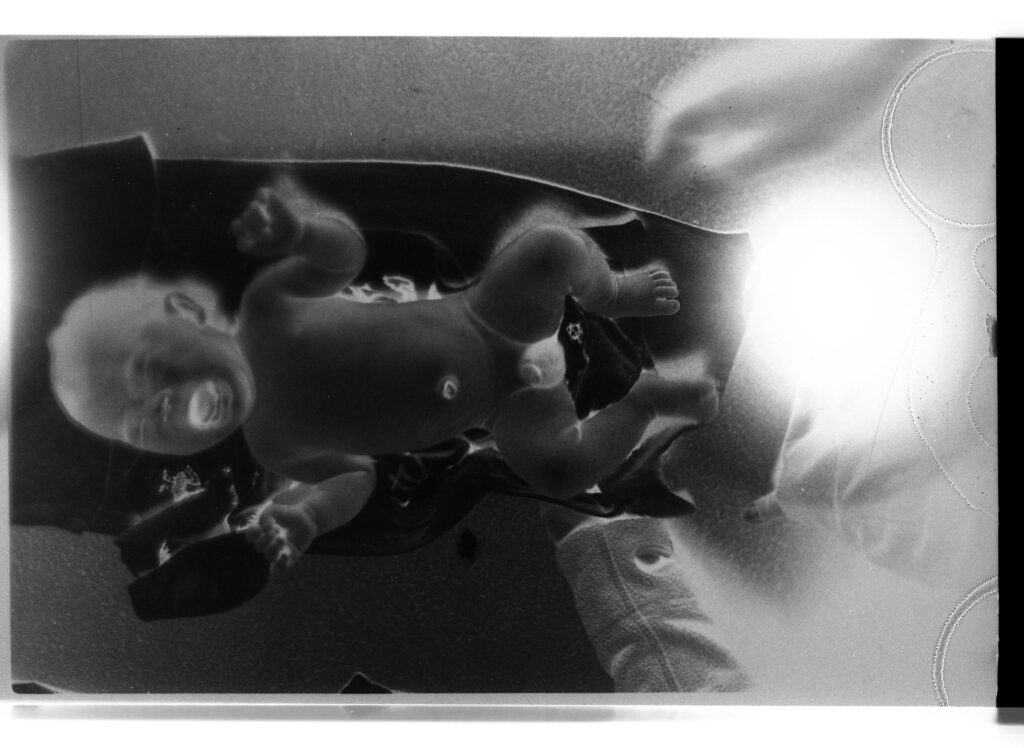
Birthday © Yuka Sato 2020
For instance, what if an image pulled out of an excerpt of 24 stills from a second were to become a print, can this be considered a photo?
Or what about an excerpt of an image from the time lapse, can it also be considered a photo?
My answer so far is that we may call it a “photo”. It can be. Digital media is also the same.
Hearing your opinion, I may have to contemplate further on the concept.
Thank you, Yuka, that is extremely kind of you. But one thing is for sure, in your films, the motifs you find are quite photographical. You discover something – a beautiful or absurd detail people normally don’t pay much attention to – and while your image is moving, time goes on, the contemplation you create is analogous to one looking at a photo. Despite the sound!
Right, sound is very important for me, a photo alone cannot convey that …
Tell us a little about how you became a photographic filmmaker, or ‚real time photographer‘. Did you start with a camera? Do you remember your very first film experiments?
As I mentioned above, I could say I began far away from so-called “art creation”, but I loved cinema or immersive art.
One day, I tried to be brave and showed some sketches to my friend. These were like storyboards, but were really rough … I sometimes did this to take note of my impressions of specific moments.
I asked her what she thought of these and if there was any way to express these.
Her answer was : “Yuka, this is an image, why don’t you create moving images based on this sketch?” It was 2014 that I started creating my first film. This was my very first film experiment.
One needs good friends like that sometimes, right? To find our own way. They see things clearer than we do. – A few words on famous experimental filmmakers. Dsiga Vertov?
“Man with a Movie Camera”? There are a lot of hints about the boundary between photo and film in that movie. He is a pioneer of cinema and we can feel the spirit of movie creation from it – very energetic and powerful.
Bunuel/Dali?
Surrealists’s work, including Dali’s work, always inspired my imagination. Since you asked me about both Bunuel and Dali, of course “An Andalusian Dog” is an amazing film. But I have to say Bunuel’s feature films are also just as, if not more, amazing. For me, “Tristana” is the best among Bunuel’s films.
I haven’t seen that one. I only know it’s with Catherine Deneuve. Maya Deren?
I respect her a lot. I feel empathy toward her perspectives in her films.
I admire Brakhage as he paved the way for many successors and inspired filmmakers.
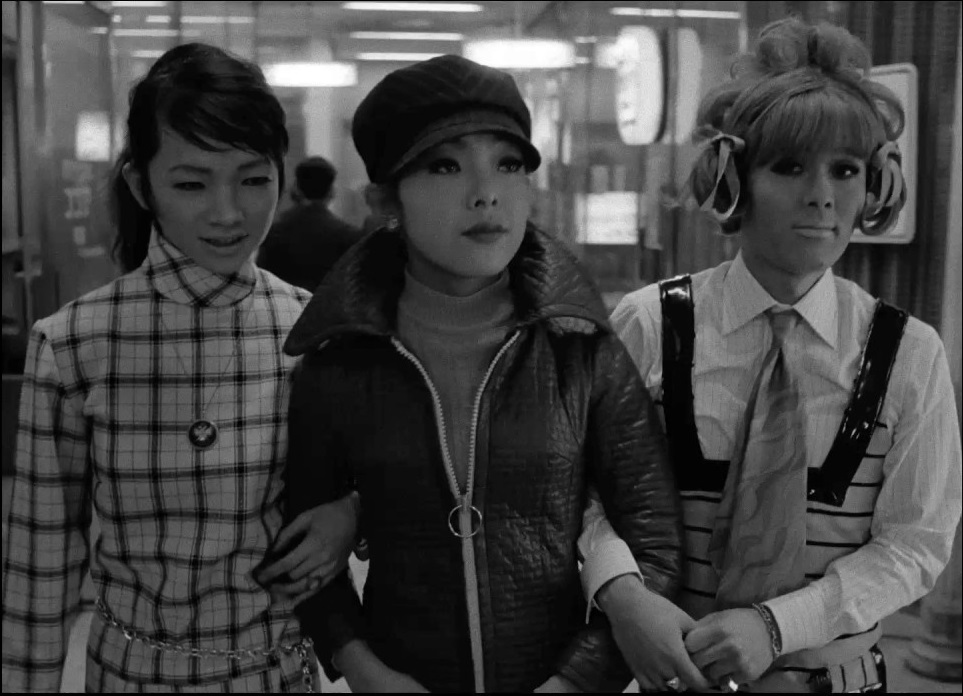
Still from “Funeral Parade of Roses” by Toshio Matsumoto (1969)
Which ones of the classics were important to you? Are there any early experimental Japanese filmmakers you can tell us about?
There are many, but if you ask me, one experimental Japanese filmmaker is Toshio Matsumoto. But he also did wonderful feature films such as “Funeral Parade of Roses”.
In “Dialogue”, you are present as ‚the author‘, which I love. Did you have to overcome a certain shyness here? Was it a conscious decision, to get in front of the camera, or did it just happen, because you thought the film needed it?
For “Dialogue”, I thought the film needed it. I enjoyed working with the cast during filming.
Why? Why did the film need it?
Well, I wanted to concentrate on those snapshots, and to narrate the inner experience. I thought my presence was the best way to show that.
This film was a very straightforward way to bring a photo shooting style to my filming process.
Where do you get your inspiration for your films from?
I get my inspiration from daily life. My films consist of the sensations that I can not explain through words, including negative ones like confusion and caustic emotions.
They include, but are not limited to, smells, sounds, and what I experience in my everyday life. It’s rather introspective and emotional, I think …
Knowing that you as the director don’t want to hierarchise, which of this year’s contributions stood out from your own personal perspective – and why?
I can say that every film is fantastic. But I can also say that the talk videos that artists presented are very precious and that is the trend of this year’s online film festival. Some artists explained the process, the background of the film and their insights. I was so inspired by those videos.
Can you be a bit more specific? They submitted their own ‚Making Ofs‘, so to say?
The talk videos were not mandatory. I asked the artists who wanted to talk about their movies to send statement videos. Those were pre-recorded by the artists.
I was pleasantly surprised when I watched the videos they submitted. Their talks were fantastic and all really interesting.
Any ideas about the future of experimental film?
There are many organizations or individuals that have started online events since the pandemic.
This may be a positive change in reaching people who may have not known about experimental films. If we manage to change perspectives, even in a small way, it may bring more awareness to the medium during this time.
Do you think the time for experimental film is still to come? Maybe especially now, in this situation, where people hunger for something else, some food for thought, when all they get are these ‚themepark‘ movies and everything is so noisy …
I can only speak for myself. What I like are experimental films … or perhaps art movies, avant-garde movies, or whatever people call them.
I think a great way is to combine several mixed mediums, such as photos, animation, video, drawings … anything you can experiment with and you are interested in. Most of the time, with a limited budget.
For me, it is the best way to express my imagination.
There may be some other means, but I have not come across them yet.
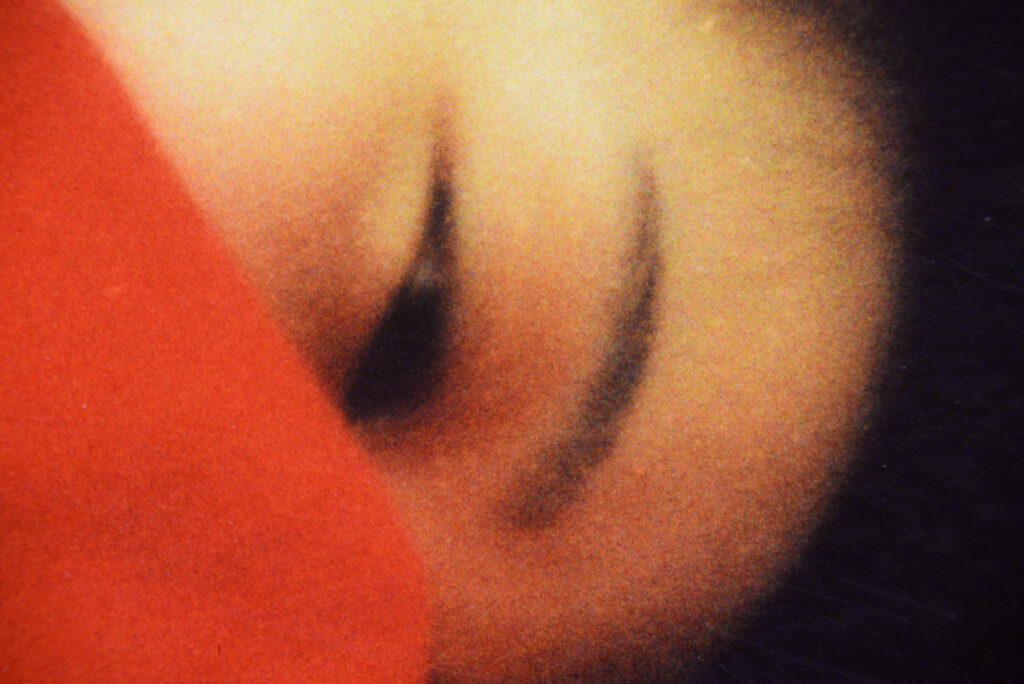
Camouflage © Yuka Sato 2017
As far as short experimental films go, despite their short runtime, they run deep and have a lot going on.
As I am a filmmaker and also a curator, I am happy if I can interest more people in this form. That way, more new artists can be compelled to stimulate and support each other.
I like that line: Despite their short runtime, they run deep. “Short and deep”, that could be a nice title for a book on experimental films. So I guess you will be organizing more film festivals?
Yes, I am planning film festivals for the coming years. For the next one, we are thinking of getting a subsidy or a grant from somewhere in order to increase the scale. We are aiming to have a fulfilling event.
As I stated earlier, there aren’t many opportunities for films and filmmakers in Japan. I want to change this situation even if it means starting with a small step.
Thank you, Yuka, for the wonderful interview! Looking forward to both your next films and your next festivals.
Below is the complete list of Yuka Sato’s artwork:
Birthday (2020) 8min
DIALOGUE (2018) 17min
Camouflage (2017) 7min
NUMB (2016) 7min
In the Room (2014) 7min
Interview: Yap Khai Qing